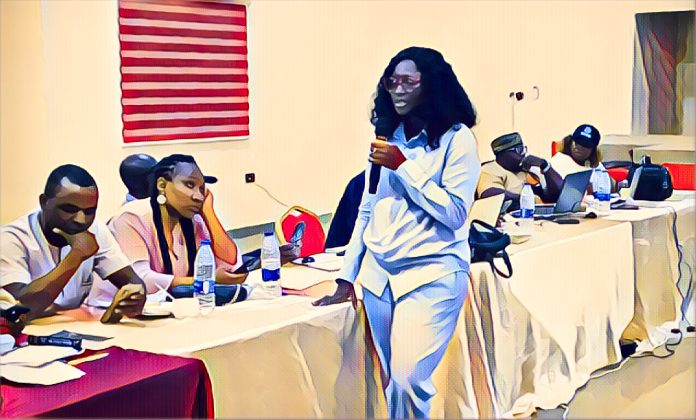Key Points
-
The vision-care gap Nigeria affects over 4.25 million people.
-
The vision-care gap Nigeria results from limited access to treatment and services.
-
The vision-care gap Nigeria carries huge economic and social costs.
Nigeria has a big problem with eye health. A new report from the international NGO Sightsavers says that more than 4.25 million Nigerians are either blind or have serious vision problems.
During a media workshop in Abuja, the organization’s country office raised the alarm about the number of people who have untreated conditions and the problems with the system that are causing them.
The most recent numbers show that there is a serious issue. Sightsavers pointed out that only about 4.4% of Nigerians can get basic eye care, while about 38% of people in middle-income countries can. The lack of access is not just a health problem; it has far-reaching effects on productivity, education, and development that includes everyone.
What the vision-care gap in Nigeria means for people
People who are blind or have low vision may have trouble with school, work, and everyday life if they don’t get the right treatment in time for glaucoma, cataracts, or uncorrected refractive errors.
Sightsavers pointed out the economic costs: less money, less work, and more work for carers. Prof. Joy Shuaibu, the Country Director of Sightsavers Nigeria, said over and over that Nigeria could lose billions of naira in potential output if nothing is done. Esther Bature, the Advocacy Coordinator, spoke for her.
Why is there a gap in vision care? Nigeria is getting bigger
There are many reasons for the gap. Urban areas have most of the infrastructure and specialised equipment; rural areas often don’t have any at all. People are being told to use the “4Ps” framework—Preserve, Prioritise, Prevent, and Protect—as a way to respond.
Eye care services are often stretched or not available at all, and campaigns to stop problems don’t always reach the most at-risk people. The result is a backlog of cases that have not been treated that builds up over time.
Sightsavers stressed the importance of having policies that include everyone. Eye health, disability rights, and gender equity should all be part of the planning for national development. The NGO said that kids, women who live in rural areas, and people with disabilities are especially likely to be left behind.
What needs to be done to fix the gap in vision care Nigeria
To close the gap, the government needs to be committed, give more money, and make sure that services are delivered in a decentralised way. Experts say that a better referral system that connects primary care clinics to specialist centres, mobile outreach in remote areas, and better data collection to keep track of progress are all good ideas.
Sightsavers is also asking for partnerships with the media and advocacy groups. The recent workshop was meant to help journalists cover the issue better and show the human stories behind the numbers.
The size of the vision-care gap in Nigeria is a warning sign. If not stopped, it could make inequality worse, slow economic growth, and make sure that millions never reach their full potential. Eye health needs to be a big part of the conversation as Nigeria works towards its development goals, not just a number on the side.



